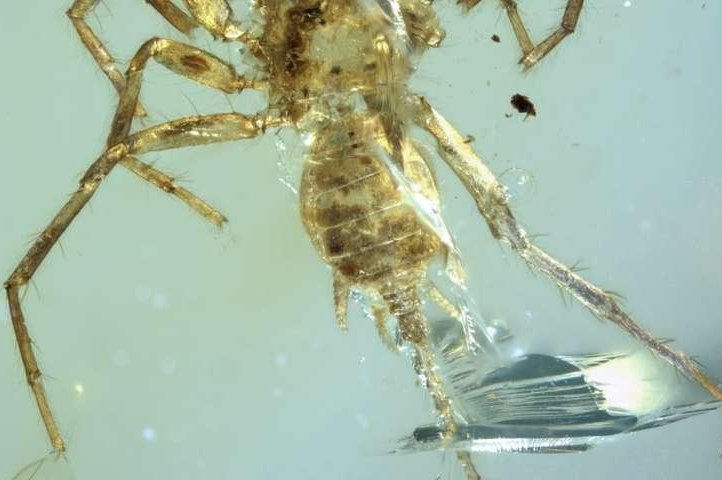1 of 2 | The newly discovered arachnid species, Chimerarachne yingi, was found in a piece of 100-million-year-old amber. Photo by University of Kansas
Feb. 5 (UPI) -- Scientists have discovered a new spider species, an arachnid with a tail, hiding in a piece of ancient amber.
The amber fossil is roughly 100 million years old and could offer new insights into the origin and evolution of spiders during the Cretaceous period. Amber sourced from Myanmar has become a popular source of scientistic discoveries in recent years.
"Interest stepped up about ten years ago when it was discovered this amber was mid-Cretaceous," Paul Selden, a paleontologist at the University of Kansas, said in a news release. "Therefore, all the insects found in it were much older than first thought."
Selden is the author of a paper describing the spider species, published this week in the journal Nature Ecology and Evolution.
"It's [amber] been coming into China where dealers have been selling to research institutions," he said. "These specimens became available last year to Nanjing Institute of Geology and Paleontology."
Scientists believe the new species is a transitionary species between earlier spider-like arachnids and the lineage that produced all modern spiders. Like most spiders, the specimen boasts fangs, small arm-like appendages called pedipalps, four walking legs and silk spinnerets. The new species also features a flagellum or tail.
"Any sort of flagelliform appendage tends to be like an antenna," Selden said. "It's for sensing the environment. Animals that have a long whippy tail tend to have it for sensory purposes."
While no modern spiders have tails, a group of relatives called vinegaroons do. Selden and his colleagues have also previously found spider-like arachnid fossils from Devonian and Permian periods -- a few hundred million years old than the newly discovered species.
"The ones we recognized previously were different in that they had a tail but don't have the spinnerets," said Selden. "That's why the new one is really interesting, apart from the fact that it's much younger -- it seems to be an intermediate form."
Scientists say the new intermediary species, named Chimerarachne yingi, likely didn't use silk to spin bug-trapping webs. Before spiders became elaborate architects, they found a variety of other uses for their silk. Silk threads can be used to leave a trail to spiders find their way back home. Spiders can also wrap their eggs or prey in silk.
Though Myanmar has changed since the Cretaceous, researchers suggest it's possible relatives of Chimerarachne yingi are still living in the jungle today.
"We know a lot about the Burmese biota during the Cretaceous," Selden said. "It was a pretty good tropical rainforest, and there are a great many other arachnids we know were there, particularly spiders, that are very similar to the ones you find today in the southeast Asian rainforest. It makes us wonder if these may still be alive today. We haven't found them, but some of these forests aren't that well-studied, and it's only a tiny creature."















